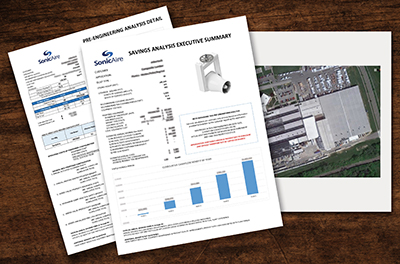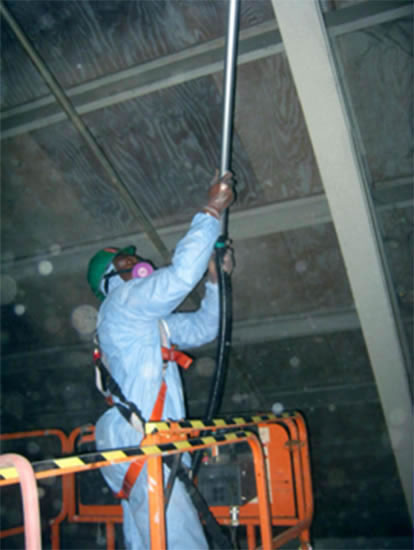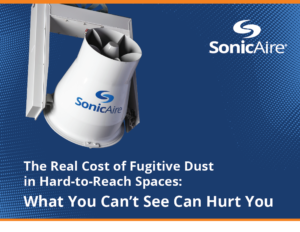There’s this stuff called Combustible Dust. Have you heard of it?
Okay, okay. That was a bit cheeky. But by now, every manufacturing and processing facility in the United States should be aware of the regulations surrounding combustible dust. Whether you call it combustible dust, fugitive dust, fugitive combustibles, or some other term, the NFPA 652 and other industry-specific standards make it a priority for Facility/ES&H managers.
While these standards don’t dictate precisely how facilities should mitigate dust buildup and the inherent dangers, they require them to do something. Even if it’s just regularly cleaning overhead and hard-to-reach spaces.
 Of course, we believe the ideal solution is our dust control fans. If you see consistent, noticeable combustible dust buildup in overhead spaces, there’s no better way to prevent it than SonicAire’s Dust Control Solutions. Our patented BarrierAire (TM) technology prevents particles from rising and settling in hard-to-reach areas. In most cases, this results in continuous prevention of dust buildup, saving facilities thousands of dollars each year in lost production and cleaning costs.
Of course, we believe the ideal solution is our dust control fans. If you see consistent, noticeable combustible dust buildup in overhead spaces, there’s no better way to prevent it than SonicAire’s Dust Control Solutions. Our patented BarrierAire (TM) technology prevents particles from rising and settling in hard-to-reach areas. In most cases, this results in continuous prevention of dust buildup, saving facilities thousands of dollars each year in lost production and cleaning costs.
We understand that this solution isn’t suitable for everyone.
So, here are the seven most common reasons why you shouldn’t purchase and install Dust Control Fans.
1 – You don’t produce dust/lint.
Seems straightforward enough, right? Occasionally, facilities in specific industries get earmarked for regulations that don’t apply to them. Perhaps you’re a woodworking manufacturer, but your building only handles light assembly and logistics. You may still be required to complete a Dust Hazard Analysis, but it’s pretty clear that there’s zero dust/lint production.
In these cases, clear documentation is critical. As long as OSHA inspectors know what’s going on, have the proper paperwork, and visibly see that there’s no dust, you’re covered. If there’s no dust, there’s no need for dust control fans.
Some facilities claim they don’t produce dust, but there is clear buildup if you climb up in the rafters. Just because you don’t create plumes of dust every hour doesn’t mean you don’t have any dust. Over time, even the most incremental dust production can add up. And if an inspector catches you at the wrong time, it could cost you.
But if you’re okay with the other reasons in this article, you may still decide that dust control solutions aren’t for you.
2 – You’ve completed your Dust Hazard Analysis, and your dust is non-combustible.
A Dust Hazard Analysis is the first step in determining how to manage dust. During this process, you’ll discover, among other things, the combustibility of your dust, likely ignition sources, and significant areas of concern. Then you’ll have to put a plan in place to ensure fugitive dust doesn’t become a danger to your facility and your employees.
Even if you just completed one to meet NFPA requirements, you may find you already have sufficient processes in place to keep dust buildup from becoming an issue. Limited dust production, consistent cleanings, and frequent checks could offer plenty of coverage for your facility. If so, kudos to you. You’re likely okay to skip dust control fans.
However, if at any time you find yourself spending more time and money than you want on dust control, it may be time to get in touch.
3 – You don’t want to make a capital investment (even with a quick return on investment).

Honestly, we believe in our products’ ability to help our customers solve problems and save money. [In fact, we believe in them so much, we offer a Compliance Guarantee.] This doesn’t mean you’re in an ideal situation to make an investment. Our products provide a significant ROI for those facilities with tedious dust buildup, often less than one year. But, you have to be in a position to make the purchase.
If there is sufficient capital for this undertaking, you could save countless dollars on cleanings and avoid fines. If not, we understand why some facilities choose to continue paying employees or third parties each year to maintain compliance.
However, if you find yourself in a more advantageous position, the results are well worth the investment. Not only will you continually maintain compliance, you’ll save time, money, and headaches in the long run. So, when you’re ready, we’ll be here to help.
4 – You have plenty of staff and downtime to clean manually.

All that said, some facilities aren’t facing the time and labor crunch. Maybe you have built-in downtime in your facility, so there’s no need to shut down specifically to clean. Or you have staff with additional capacity and the equipment to easily access overhead spaces. Based on our experience, this isn’t every facility.
But if it’s you, then paying for SonicAire fans that automatically keep overhead spaces clear of dust may not be a suitable investment. As soon as you lose productivity or struggle to find staffing, it could be time to rethink your process.
5 – You have a Class I Hazardous Location (Flammable Vapors).
A Class I Location is any facility with gas and/or vapors in the air which are defined as flammable and combustible. Defined by the National Electric Code in conjunction with the NFPA, this includes petroleum refineries, gas storage facilities, utility gas plants, and other locations where flammable vapors are present.
While some chemical blending and off-gassing processes also have combustible dust present, dealing with flammable vapors requires very different safety measures and equipment. While SonicAire fans are extensively used in Class II Locations, they are not suitable for Class I Locations. Operating in an environment with flammable vapors presents levels of complexity for equipment design that SonicAire hasn’t yet tackled.
6 – Your facility regularly experiences temperatures that exceed 175°F/75°C.
Most manufacturing and processing facilities operate at normal to slightly elevated temperatures. Thanks to the running machinery and large spaces, keeping them cool isn’t always easy or cost-effective.
Then there are processes where extremely high temperatures are the norm. This includes metal, glass, and ceramics production along with other energy and chemical processes. SonicAire fans are designed to operate at temperatures below 175°F/75°C. While they have been installed in high-temperature environments greater than 200°F, it can reduce their lifespan and void their warranty.
If you’re concerned about the environmental conditions in your facility, consult with a member of our team to find the ideal solution.
7 – You’re okay with risking OSHA citations and fines.
Look. No one wants to be cited or fined for violations. But we also realize some locations are willing to take the risk. They allow dust to build up to a specific limit and clean only when necessary. While it may not fit the letter of the law, it’s a reality for some facilities.
Ultimately, this could lead to a violation or fine if an inspector makes a surprise visit, costing you thousands of dollars.
We, of course, would still recommend you install a dust control solution. Or, at minimum, clean regularly. Because choosing to do neither could be far worse than a violation. It could put your facility and employees in danger.
Beyond being a cost-effective way to prevent dust buildup, it’s also an approved method per Section 9 of the NFPA 652 Standard. And, if you purchase a SonicAire Dust Control System, we guarantee compliance with combustible dust standards.
Any of these could be considered reasons you shouldn’t purchase and install SonicAire Dust Control Solutions. If you feel like these don’t apply to you, it’s time to get a quote. Our experienced sales and engineering staff is prepared to guide you through the process.
- DISCOVER: We’ll identify your biggest dust control challenges.
- DESIGN: We’ll develop an engineered system specifically for your facility.
- DELIVER: Installed fans continuously prevent fugitive dust buildup.
- DUST IS DONE: Guaranteed Compliance protection for your facility.

GET YOUR FREE GUIDE:
The Real Cost of Fugitive Dust in Hard-to-Reach Spaces
What You Can’t See Can Hurt You
To help protect your workplace, we’ve compiled the following resource, The Real Cost of Fugitive Dust in Hard-to-Reach Spaces: What You Can’t See Can Hurt You. In it, we identify seven ways fugitive dust is likely impacting your facility and its profitability.
These costs go beyond housekeeping and explain why you should be preventing dust buildup to protect the bottom line, not just to stay in compliance.


